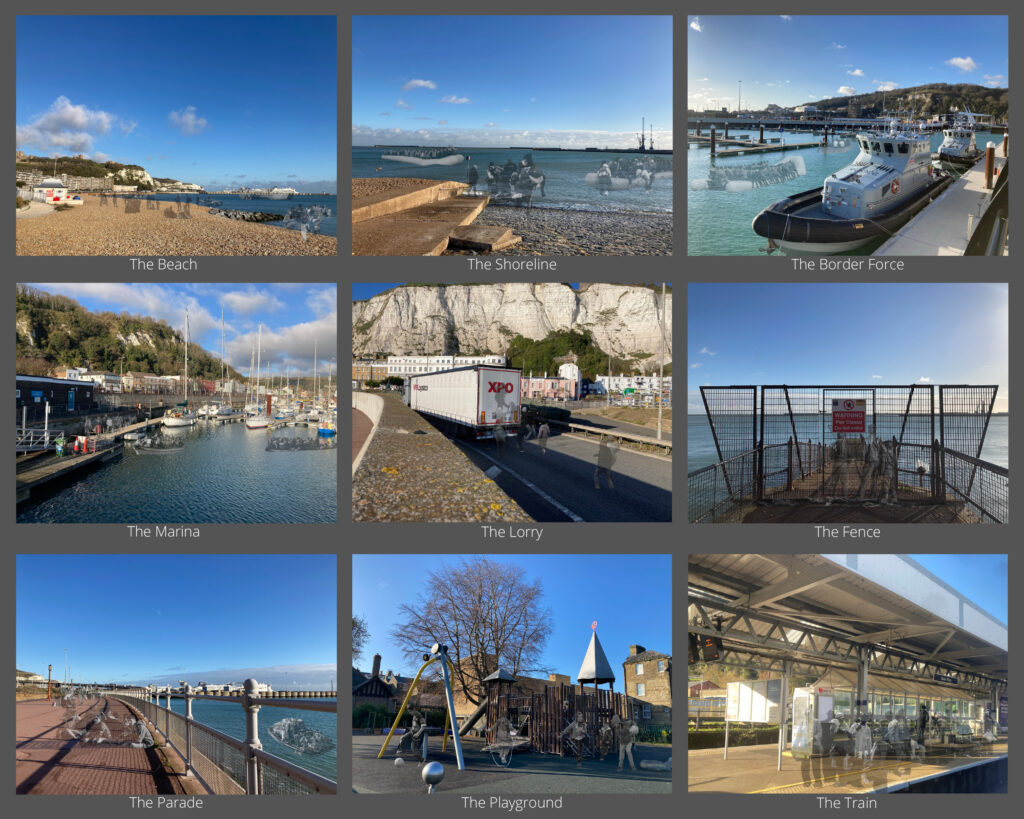
On the 24th of November 2021, 27 people died whilst attempting to cross the English Channel from France to the United Kingdom. The insubstantial dinghy capsized and the cold dangerous waters swept their lives away. The following morning I captured the unmoved photos of Dover, the closest point to France and the intended destination for many refugees who pursue the Channel Crossing.
The selection of nine photographs explores a refugee’s potential path upon their arrival in Dover. They start at the shoreline, and then awaits the walk away from the sea, in any direction into the perceived ‘safe’ mainland of Britain. A brief stop at the town’s playground encapsulates childhood innocence and the everyday normality of those who make the crossing. Finally, to end where my own trip concluded, at Dover Priory train station, waiting to board a train to safety.
Additionally, my piece is an imagination of Dover’s landscape if death never claimed the lives of those who attempt to make the journey by sea. I overlayed multiple images of refugees, retrieved from the public domain, to portray the figures as ghosts at the borderland, allowing the viewer to mourn their deaths, but fundamentally to recognise the UK’s draconian border management that severely limits safe legal routes, therefore, forcing refugees to make the life-threatening crossing. Furthermore, the English Channel represents a place where law is suspended and those within its bounds are vacant of rights. The refugee’s dehumanised life is a state of limbo, alive but not exercising the value of life itself. Likewise, ghosts also exhibit a state of limbo, inhabiting a ‘world’ between life and death.
My project seeks to give meaning to the lives lost. I intend to give the dead agency and life after death, maintained by the viewers who mourn. By depicting the possibilities of the lives that may have been, it offers a pathway to grieve and establish a political struggle for safe legal asylum routes.